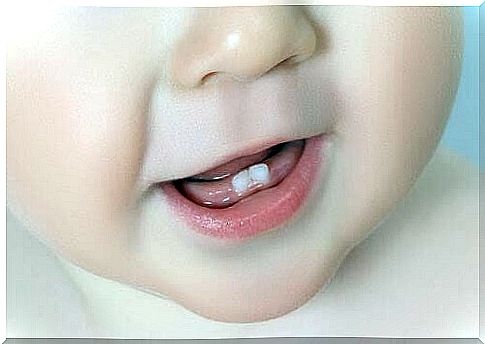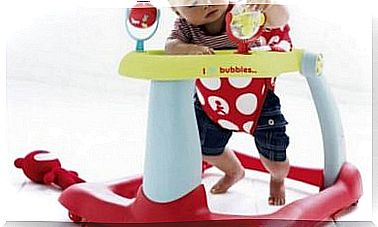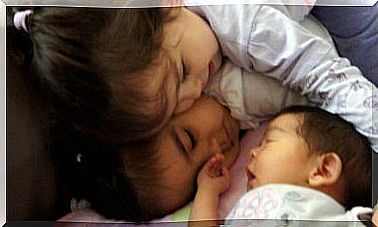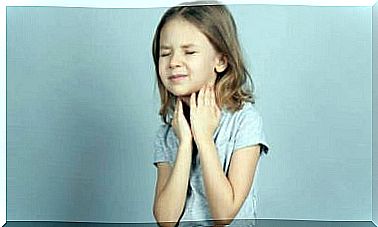How To Handle Pain When Teething

The first teeth usually look forward between the third and sixth month of a baby’s life. For some children, this causes discomfort, pain and nausea. Why does it happen and how can we relieve pain in children when teething?
The pain and discomfort come from inflammation and irritation of the gums. The front teeth in the lower row of teeth are usually the first to appear.
The whole process depends on genetic factors and how far the pregnancy was when the baby was born. But when it does, it can be extremely uncomfortable for the baby.
Symptoms of tooth decay in children
The pressure of the tooth on the gums gives a feeling of discomfort that is sometimes difficult to cure. Babies usually touch their gums with their tongue when their first teeth begin to appear.
They feel the inflammation at the same time as they feel the pain from the tooth cracking. Therefore, they look for anything they can put in their mouths to try to alleviate the pain.
Another sign of tooth decay in infants is that they typically drool. This happens because the constant movement of the tongue in contact with the inflamed area causes more saliva to be secreted. In turn, the saliva begins to drip down and run down the chin because they have not yet mastered the swallowing reflex.
Your baby will probably cry and wake up more often at night with tooth decay. This happens because the pain in the gums begins to pulsate at the same rate as the heartbeat. At night and when lying down, the throbbing pain tends to intensify.

You should take into account that the pain can start up to three weeks before you can see the first teeth sticking out. Inflammation of the gums can sometimes cause fever in some children.
Secondary discomfort when teething in children
In addition to the pain caused by the inflammation, there may be other, secondary discomfort. The first is that the constant increase in saliva production means that the baby can get wet in a few seconds.
To solve this, there is nothing better than a good old-fashioned bib and to regularly wipe the chin area to prevent the area from becoming irritated and red. But you will probably need other solutions if the baby’s saliva production is excessive.
Another side effect is that the baby may become irritated in the diaper area. This happens because the first teeth change the pH of the saliva. As a result, the pH of the urine and also of the faeces change. To avoid possible irritation, it is best to change the diaper every time the baby pees in it.
How to relieve pain when teething
In addition to the use of paracetamol, such as Alvedon, and ibuprofen (always according to your pediatrician’s instructions), there are also some useful home remedies and housewife tricks. Here are the most famous:
- A soft massage: Because the child’s motor skills are not fully developed, he can not massage his own gums. If the gums are very inflamed, it is best not to touch it at all. If it is not, you can gently apply a steady pressure to the area. Rub it gently with your finger and make sure it is as cold as possible.
- Frozen pieces of milk: It does not matter if they are made from breast milk or substitute. The important thing is that your baby likes them enough to let you place them on his or her gums. Cold is the first thing you should try to use to relieve this type of inflammation. You can make the pieces in an ice cube box or in special molds.

- Bite rings and bite toys: There are new “necklaces” on the market with a bite ring included. The ones that are best for pain relief are the ones that contain water, and that you can put in the fridge. In addition, there are special gels to buy at the pharmacy that can also provide relief.
- Frozen cloths: This is a good option for infants who find commercial bite toys too hard or uncomfortable. These cloths are easy to hold, but it is best that part of the cloth is dry so that the hands do not get too cold.
Final things to think about
Tooth cracking usually occurs symmetrically between the upper and lower jaw. It begins before the age of six months and ends at the age of two to three with the cheek teeth.
Although pain and discomfort are fairly normal during this stage, you should always be aware of other potential symptoms. A fever of more than 38 ° C should be checked by a doctor, as well as any other unusual behaviors or symptoms that you as parents may notice.









